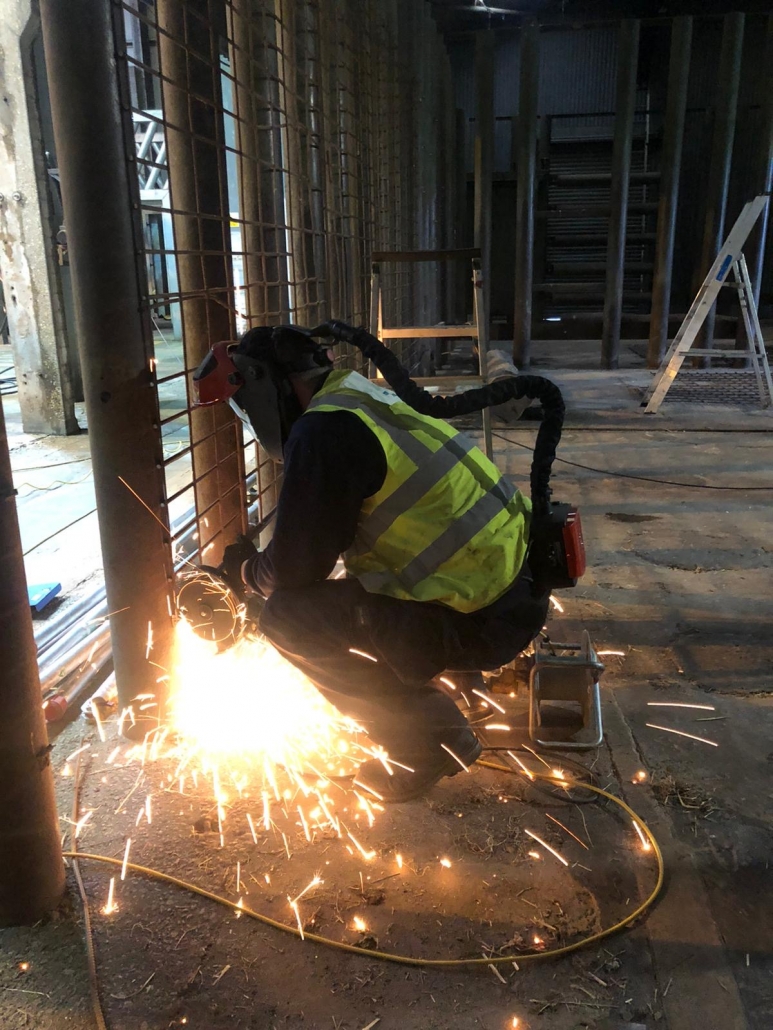CLM Services Ltd Awarded BIAZA Corporate Associate Status!
We are proud to have been accepted as a Corporate Associate of BIAZA, The British and Irish Association of Zoos and Aquariums.
We are proud to have been accepted as a Corporate Associate of BIAZA, The British and Irish Association of Zoos and Aquariums.
We have been busy developing a brand new product designed to support businesses implement effective hand washing during the Covid-19 pandemic.

Over the last few months, we have witnessed a level of change which nobody could have anticipated. Despite the emotional and financial hardship many have endured in lockdown, some of the changes we are living with have been surprisingly positive. We have witnessed a return to a simpler way of living, where we think about the impact of our journeys outside, relishing the opportunity to get some fresh air and to blow away the cobwebs.
Many people currently have more time on their hands due to being furloughed, so they are dusting off their bikes to take advantage of the quieter roads and a chance to escape their four walls. Others are opting to cycle to work, understandably concerned over the infection risks associated with using public transport. Parents are being dragged on family bike rides by their kids and are remembering the freedom and enjoyment that cycling can offer, perhaps sparking a new resolve to incorporate cycling into post-lockdown life. Bikes have also provided a safe and enjoyable way for NHS keyworkers to get to work and there has been a number of new initiatives and schemes introduced to ensure they have access to the bikes they need. Whatever the reason that people are opting to jump back on their bikes, the health and environmental benefits are proven, and we hope they are here to stay.
A side effect of lockdown and the reduced use of cars led to a significant improvement in air quality in Wuhan. Since lockdown ended in Wuhan, car usage has unfortunately soared from 24% to 66% as people abandon public transport for fear of infection. There is the potential that this spike in air pollution could lead to another peak in infection rates. Cities such as Paris, Milan and New York are learning the lessons from Wuhan and intend on embracing the bicycle as a serious alternative mode of transport by providing improved cycling networks. Paris has plans to build 650km of pop-up “corona bike lanes” which will hopefully become a permanent legacy after the pandemic ends.
Speaking at a press conference on northern England’s financial recovery from the pandemic last week, Andy Burnham, the Mayor of Greater Manchester, and Steve Rotheram, the Mayor of Liverpool City Region, said councils ought to fight to “keep some of the benefits that we’ve been experiencing” by incorporating cycling and walking networks in our cities. Burnham said: “There needs to be a new normality where we improve things. We ask for the public’s patience because we’re going to build back better. I think people do want to keep the cleaner air, they do want to keep exercising, they do want a more flexible working life where they don’t have to go into the office every day.”
All UK cities have Net Zero Carbon targets to achieve in the coming years and some councils are already taking the lead to redesign city landscapes to put pedestrians and bikes back at the heart of towns and cities. Perhaps this current crisis will pave the way for improved cycleways and safer roads, demonstrating the appetite of the general population to embrace change. Hopefully, with initiatives like the Bee Network already in the planning, the North will take the lead in this cycling revolution and will embrace the health and environmental benefits that it can offer.
Alongside this renewed popularity in cycling, some councils are reporting an increased incidence of bike theft as opportunistic thieves are taking advantage of people having to leave their bikes unattended outside shops or in their gardens. Many people do not have the facilities at home to store a bike and so, despite a desire to ditch the car, the inconvenience of cycling outweighs the benefits. To combat this, groups are campaigning for an innovative approach to the provision of bike lock ups and shelters, raising money for the installation of compact bike shelters in residential streets to make cycling a more convenient option. Perhaps improving bike storage facilities in residential areas as well as places of work, education and leisure and throughout towns and cities, will help keep this new momentum going?
CLM has a long history designing and installing bike shelters for a range of public and private sector organisations. There are a number of different bike storage options to consider, including simple ‘bike hoops’ which people can lock their bike to, ‘off-the shelf’ shelters which are quick to fabricate and install, or the more complex and bespoke designs which can provide a real ‘wow-factor’ to a building.
If you are considering the benefits that a new bike shelter could offer your organisation at this time of change, please get in touch. Our team will provide a free consultation and talk you through the various options available. Our experience makes us highly competitive in this market and our customers quite often find that our high-quality, supply and install solutions are less than the cost of a supply only option from some of our larger competitors. We can turn your ideas into a workable solution quickly and with no big lead times, you could have a safe and secure place to store your bike before you know it!
We believe the increasing popularity of cycling as a viable mode of transport is something we should encourage and build upon… we would love to hear from you!
We are proud to have been awarded our 4th year of CHAS accreditation, demonstrating our ongoing commitment to ensuring safe workplaces, safe projects and safe systems and procedures.
Working on behalf of Wates Facilities Management, CLM has been awarded the contract to maintain the sliding doors which form various habitats within Twycross Zoo. The CLM team will visit at regular intervals throughout the year to inspect the working mechanisms of the slides and to undertake any necessary repairs.
In February 2019, The Health and Safety Executive (HSE) announced that with immediate effect, it was strengthening its enforcement expectations for welding fumes. It stated that general ventilation was no longer considered as providing sufficient control or protection.
The HSE reclassified welding fumes, including those produced from mild steel, as a human carcinogen and will no longer accept any welding undertaken without suitable exposure control measures being in place, regardless of the duration.
There is no single solution to welding fume protection, it depends on the environment where the welding is being carried out and the type of work being undertaken.
In this blog we look at the different control measures which can be implemented to prevent exposure to welding fume in the workplace.
What does the law say?
By law, companies must protect workers by controlling the health risks from welding fumes. This also applies to specialist welders and workers who only do a small amount of welding.
The HSE advise that risks can be controlled in the following ways:
What do companies need to do to ensure compliance?
In response to this new guidance from the HSE, welding companies are required to review their risk assessments to evaluate the risk and likelihood of workers inhaling welding fume, and to reflect the increased risk classification of the welding fume.
The risk assessment should take into consideration issues such as the length of time the person will be exposed to fumes for, the location where the welding is taking place and the potential coatings, platings or contamination that are on surfaces being welded or cut. Welding in confined spaces, for example, can greatly increase the risk factor, it should not be assumed that welding outside would carry a low risk factor as appropriate RPE is now a requirement.
The risk assessment and safe systems of works should be used to eliminate the risk or to substitute the welding technique or consumables. Where it is not possible to eliminate or substitute the hazard, control measures should be introduced with the objective of keeping the particulate and gaseous fume levels as low as possible.
Local Exhaust Ventilation Systems (LEV):
General ventilation is no longer considered to be adequate as offering the necessary control, the most appropriate engineering control is fume extraction using Local Exhaust Ventilation (LEV).
Most LEV systems all work in the same way, comprising a series of pipes which removes fumes and dust from the working area via an airflow, which is then filtered. While LEVs vary in scale, some are large permanent systems, while some portable, the main differentiator is the hoods which should be the right design for the process being carried out.
Respiratory Protective Equipment (RPE)
Respiratory protective equipment (RPE), such an Air Fed Welding Mask, protect workers from inhaling fumes. An Air Fed Welding Mask is battery powered and worn on a belt around the welders waist. Air is sucked into the back of the Respirator Unit, through a filter, then passed up to the welding helmet via a hose. Fumes rising up from the weld are not able to enter the welders breathing zone. Air Fed Welding Helmet provides a flexible solution; the unit can go wherever the welder goes, meaning it can be used in the workshop or for on-site welding projects.
Face Fit Testing and Staff Training
Critical to the correct and optimum use of air fed welding masks, is the face-fit testing process. All wearers of tight fitting or close-fitting face pieces require a face fit test for each mask that they wear. Ideally, face-fit testing should be carried out at mask selection stage, meaning employers can ensure the correct mask models and sizes can be purchased. It is recommended that face fit tests are repeated every 2 years, or more frequently is appropriate.
The importance of retraining employees and making them aware of the new HSE guidance cannot be underestimated. Training should include:

